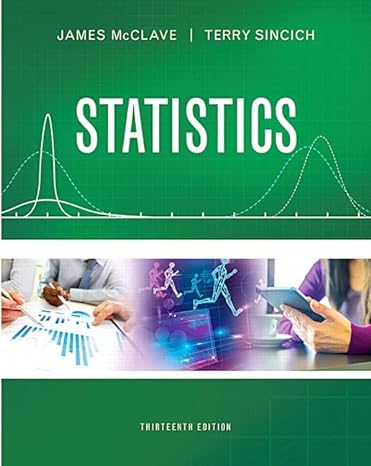A new dental bonding agent. Refer to the Trends in Biomaterials & Artificial Organs (Jan. 2003) study
Question:
A new dental bonding agent. Refer to the Trends in Biomaterials & Artificial Organs (Jan. 2003) study of a bonding adhesive for teeth, presented in Exercise 8.154
(p. 455). Recall that the adhesive (called “Smartbond”) has been developed to eliminate the necessity of a dry field. In one portion of the study, 30 extracted teeth were bonded with Smartbond and each was randomly assigned one of three different bonding times: 1 hour, 24 hours, or 48 hours. At the end of the bonding period, the breaking strength (in Mpa) of each tooth was determined. The data were analyzed with the use of analysis of variance in order to determine whether the true mean breaking strength of the new adhesive varies with the bonding time.
a. Identify the experimental units, treatments, and response variable for this completely randomized design.
b. Set up the null and alternative hypotheses for the ANOVA.
c. Find the rejection region using a = .01.
d. The test results were F = 61.62 and p@value ≈ 0. Give the appropriate conclusion for the test.
e. What conditions are required for the test results to be valid?
f. The sample mean breaking strengths for the 3 bonding times were x1 hour = 3.32 Mpa, x24 hours = 5.07 Mpa, and x48 hours = 5.03 Mpa. Using an experimentwise error rate of .05, Tukey’s method detected no significant difference between the means at 24 and 48 hours;
however, the mean at 1 hour was found to be significantly smaller than the other two means. Illustrate the results of the multiple comparisons of means by ordering the sample means and connecting means that are not significantly different. What practical conclusions can you draw from the analysis?
Step by Step Answer:

Statistics Plus New Mylab Statistics With Pearson Etext Access Card Package
ISBN: 978-0134090436
13th Edition
Authors: James Mcclave ,Terry Sincich




